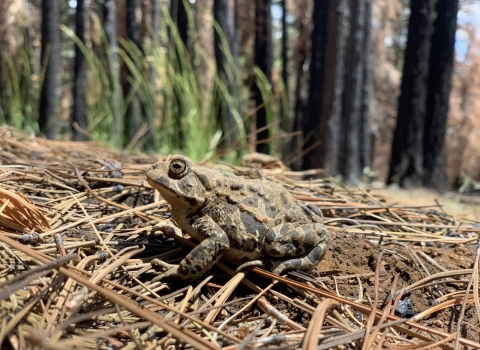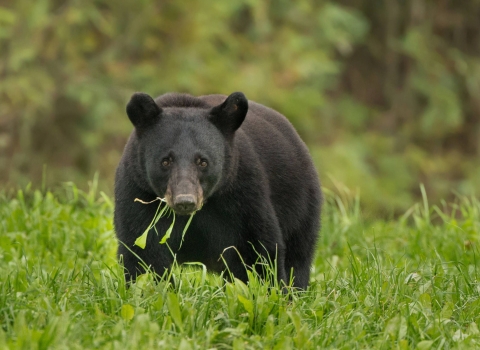SACRAMENTO, Calif. - The U.S. Fish and Wildlife Service has determined that the California spotted owl is comprised of two geographically and genetically distinct population segments. The Service is proposing to list the Coastal-Southern California DPS as endangered and the Sierra Nevada DPS as threatened under the Endangered Species Act. As part of this proposed listing, the Service is including a 4(d) rule for the Sierra Nevada DPS that exempts the prohibition of take under the ESA for forest fuels management activities that reduce the risk of large-scale high-severity wildfire.
“Our goal is to help the California spotted owl recover across its range,” said Michael Fris, field supervisor of the Service’s Sacramento Fish and Wildlife Office. “Ongoing collaboration with a number of partners will result in positive conservation gains and put this species on the road to recovery.”
California spotted owls are distributed across California and Nevada. The owl requires forests that have multi-layered canopy cover, large trees and a mix of open and densely forested areas for nesting, foraging and roosting. The greatest ongoing threats to California spotted owls include habitat loss resulting from large-scale high-severity wildfires, competition and hybridization with non-native barred owls, tree mortality due to drought and beetle infestations, and temperature and precipitation changes related to climate change climate change
Climate change includes both global warming driven by human-induced emissions of greenhouse gases and the resulting large-scale shifts in weather patterns. Though there have been previous periods of climatic change, since the mid-20th century humans have had an unprecedented impact on Earth's climate system and caused change on a global scale.
Learn more about climate change .
After reviewing the best available science, including information provided by species experts, the Service evaluated the condition of each DPS by assessing the owl’s occupancy of forests in its historical habitat, connectivity between territories, risk of population decline, and the number and severity of threats. The Coastal-Southern California DPS does not have a strong ability to withstand normal variations in environmental conditions, persist through catastrophic events, or adapt to new environmental conditions throughout its range, which led the Service to propose listing the DPS as endangered. The Sierra Nevada DPS has a reduced ability to adapt to changing environmental conditions due to habitat loss and fragmentation from wildfires. However, this DPS can still withstand normal variation in environmental conditions, and some parts of the population remain in stable condition, which led the Service to propose listing it as threatened with a 4(d) rule.
As large-scale high-severity wildfire is the biggest threat to California spotted owl, the Service worked with Sierra Pacific Industries and the U.S. Forest Service to develop coordinated, multi-party fire risk reduction efforts that include the removal of brush and select trees that fuel fires in owl habitat. Most of the land inhabited by California spotted owls is managed by the Forest Service and Sierra Pacific Industries. Implementation of their fire risk reduction plans could help improve California spotted owl habitat in the coming years.
Today’s announcement comes as the ESA turns 50 years old in 2023. Throughout the year, the Department of the Interior will celebrate the importance of the ESA in preventing the extinction of imperiled species, promoting the recovery of wildlife and conserving the habitats upon which they depend. The ESA has been highly effective and credited with saving 99% of listed species from extinction. Thus far, more than 100 species of plants and animals have been delisted based on recovery or reclassified from endangered to threatened based on improved conservation status, and hundreds more species are stable or improving thanks to the collaborative actions of Tribes, federal agencies, state and local governments, conservation organizations and private citizens.
The Service is seeking public comment on its proposal to list the Coastal-Southern DPS as endangered and Sierra Nevada DPS as threatened with a 4(d) rule. The documents will publish in the Federal Register on February 23, 2023. The publication will open a 60-day public comment period. The Service will consider comments from all interested parties received by April 24, 2023. The proposal and information on how to submit comments can be found on www.regulations.gov by searching under docket number FWS-R8-ES-2022-0166.




